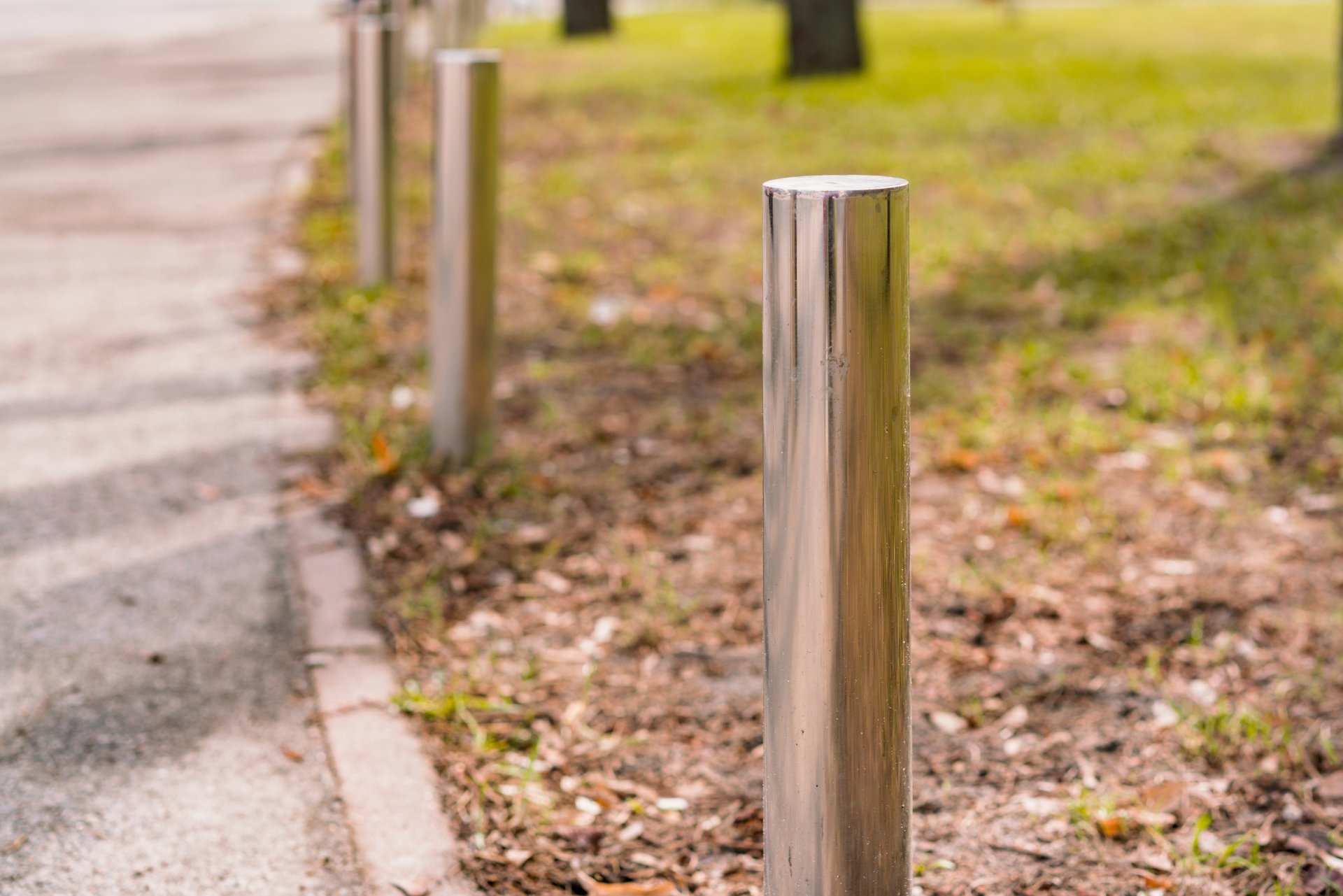Bollards are a standard sight in all urban areas. They are a great multipurpose tool which is used in a variety of settings to aid traffic and access control, perimeter and property security and pedestrian safety. Bollards are sturdy, vertical posts which can be made of different materials. They can be steel or stainless steel, concrete and even recycled plastic. Bollards are traditionally designed to be strong and able to withstand impact from heavy vehicles and similar potential dangers.
There are two basic types of bollards – removable bollards and permanent bollards. In recent years there has been an increase in demand for the latter as they offer flexibility and are an excellent choice for businesses and municipalities alike. Both removable and permanent bollards have their benefits and drawbacks. In this article, we will do an overview of their pros and cons and compare the two types to help you determine which is best suited for your needs. This blog is helpful for any property owner, facilities manager or security professional looking to understand the differences between removable and permanent bollards.
What are removable bollards?
Removable bollards are a type of traffic barrier that can be easily removed when not needed. They are typically strong poles of varied thickness which are put into the ground into a sleeve that they can quickly come in and out of. The hole left by the missing bollard is often covered with a flap so that removal doesn't leave an unsightly gap. Removable bollards may be anchored in place with a locking mechanism or secured using a special base plate installed in the ground.
One of the main advantages of removable bollards is their flexibility and versatility. These bollards are commonly used in areas that require temporary access, such as pedestrian zones or event spaces. They can be used both indoors and outdoors. They offer a flexible way to control access to places with changing functions, such as a central street that is occasionally used for carnivals and festivities during which vehicle traffic needs to be restricted. They can also be in a reversed way – to demarcate a pedestrian area but also allow emergency or maintenance vehicles when required. They can be used to control temporary parking spaces or access to a loading bay.
Another plus for removable bollards is that they are easy to install and remove. Installation is a one-off event requiring no further groundwork every time you put the bollard in the ground or take it out.
A drawback of removable bollards is that they need to be stored somewhere while not in use. This could create some extra need for storage and logistics, which you must plan for in advance. Another potential con, depending on what you need to use the bollards for, is their slightly lower impact resistance compared to some non-removable bollards. Removable bollards are not anchored to a permanent foundation like non-removable ones, which may make them more vulnerable to being knocked over or dislodged when hit by a vehicle.
What are non-removable (permanent) bollards?
Permanent bollards are usually cylindrical posts of varying heights fixed into the ground to provide a physical barrier or a visual guide for drivers or people walking. Bollards that are permanently anchored in place and cannot be relocated. They are typically made of heavy-duty materials such as steel or concrete bollards and are designed to provide long-term protection and security.
Non-removable bollards are used for security, traffic control, pedestrian safety, parking management and other infrastructural demarcation needs. Permanent bollards can be found in areas where changing traffic needs are highly unlikely, and their permanence is not a hindrance but rather a desired characteristic.
Permanent bollards are an excellent solution for heavy traffic areas like car parks where protecting pedestrians in demarcated walkways is important. They also work well for places with constant security requirements, which is why they are often installed around airports, government buildings or other areas where higher levels of security are needed at all times. One of their key advantages is that they are permanently anchored into the ground, making them durable and very resistant to impact. Overall, they work well for any setting where you expect long-term use and no changing needs.
A benefit of having permanent bollards is that there are a bit more options when it comes to the material – we offer steel bollards, concrete bollards, polyurethane and ferrocast bollards and even timber bollards. Whilst our range of removable bollards is still very rich in choice, there are certain limitations.
The big drawback of non-removable bollards is, naturally, their permanence. They cannot be repositioned when needed; once erected, it is a lot of work to remove them.
What type of bollard should you install?
There are advantages and disadvantages to both options. When choosing a bollard, you must first decide on the level of security you require and the likelihood of traffic and access needs fluctuating and changing. These are the two most important factors that would determine what type of bollard would best work for you. However, the answer is often not one or the other. In reality, most of our clients have premises that require both. We often recommend that clients create a mixed strategy for more complex needs. The best and most optimal thing to do is to install both permanent and non-permanent bollards strategically around your premises, depending on localised needs. This way, you can target problem areas with the right solution.
If you want to discuss your options for bollards, don't hesitate to get in touch with us. We are always happy to advise our clients on the best solution.
